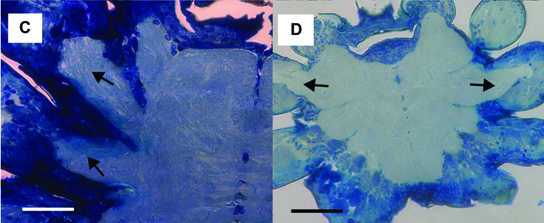
According to Smithsonian researchers, the brains of tiny spiders are so large that they fill their body cavities and even overflow into their legs. They are essentially walking brains. Researchers measured the central nervous systems of nine species of spiders, everything from giant rainforest dwellers to spiders smaller than the head of a pin. What they found is startling. As the spiders get smaller, their brains get proportionally bigger, to the point where they fill up more and more of the body.
They discovered that the central nervous systems of the smallest spiders fill up nearly 80 percent of the body cavity, including about 25 percent of their legs. This would explain why some of the tiniest, immature spiders have deformed and bulging bodies. The bulge contains extra brain. Adults of this same species do not have that bulge.
It’s a matter of getting a whole species’ worth of genetic info into a smaller size. Brain cells can’t really get any smaller, because most cells have a nucleus that contains all of the spider’s genes. This takes up space. The diameter of the nerve fibers or axons also cannot be smaller because the flow of ions that carry nerve signals cannot be interrupted, or the signals are not transferred properly. It’s sort of like taking the hard drive from your laptop and incorporating that into your tablet PC. You have a smaller device, but now more of it is storage.
“We suspected that the spiderlings might be mostly brain because there is a general rule for all animals, called Haller’s rule, that says that as body size goes down, the proportion of the body taken up by the brain increases,” said William Wcislo, staff scientist at the Smithsonian Tropical Research Institute. “Human brains only represent about 2-3 percent of our body mass. Some of the tiniest ant brains that we’ve measured represent about 15 percent of their biomass, and some of these spiders are much smaller.”
1 Comment
Why? Even our brains pass through spinal chord through the spinal column which is the nerve junction for all organs of the body. Since spiders are spineless creatures this arrangement is made to contain its developing brain whose activity involves very fine highly skilled spinning ability. Even in our brain the portion allotted to fingers and especially the thumb occupies more space to tackle the highly skilled work of humans. Thank You.